- News
- Reviews
- Bikes
- Accessories
- Accessories - misc
- Computer mounts
- Bags
- Bar ends
- Bike bags & cases
- Bottle cages
- Bottles
- Cameras
- Car racks
- Child seats
- Computers
- Glasses
- GPS units
- Helmets
- Lights - front
- Lights - rear
- Lights - sets
- Locks
- Mirrors
- Mudguards
- Racks
- Pumps & CO2 inflators
- Puncture kits
- Reflectives
- Smart watches
- Stands and racks
- Trailers
- Clothing
- Components
- Bar tape & grips
- Bottom brackets
- Brake & gear cables
- Brake & STI levers
- Brake pads & spares
- Brakes
- Cassettes & freewheels
- Chains
- Chainsets & chainrings
- Derailleurs - front
- Derailleurs - rear
- Forks
- Gear levers & shifters
- Groupsets
- Handlebars & extensions
- Headsets
- Hubs
- Inner tubes
- Pedals
- Quick releases & skewers
- Saddles
- Seatposts
- Stems
- Wheels
- Tyres
- Health, fitness and nutrition
- Tools and workshop
- Miscellaneous
- Tubeless valves
- Buyers Guides
- Features
- Forum
- Recommends
- Podcast
review
 2021 Wahoo Kickr Snap.jpg
2021 Wahoo Kickr Snap.jpg£299.99
VERDICT:
Solid, quiet and realistic deluxe wheel-on trainer, but it's getting left behind by direct drive in 2022
Quiet
Compact
Great ride feel
No cadence
Sluggish and spikey response in ERG mode
Expensive for a wheel-on trainer
Weight:
17,200g
Contact:
At road.cc every product is thoroughly tested for as long as it takes to get a proper insight into how well it works. Our reviewers are experienced cyclists that we trust to be objective. While we strive to ensure that opinions expressed are backed up by facts, reviews are by their nature an informed opinion, not a definitive verdict. We don't intentionally try to break anything (except locks) but we do try to look for weak points in any design. The overall score is not just an average of the other scores: it reflects both a product's function and value – with value determined by how a product compares with items of similar spec, quality, and price.
What the road.cc scores meanGood scores are more common than bad, because fortunately good products are more common than bad.
- Exceptional
- Excellent
- Very Good
- Good
- Quite good
- Average
- Not so good
- Poor
- Bad
- Appalling
The second-generation Wahoo Kickr Snap is still arguably the most deluxe wheel-on smart trainer you can get, and remains the most affordable trainer in Wahoo's range. I was satisfied by the ride feel and accuracy, and it still holds its own in 2022, but I think the price gap to more affordable direct-drive trainers is now too narrow considering the smaller number of features.
We last reviewed the Kickr Snap in 2016, the first generation of the trainer that had +/-5% power accuracy. V2 was launched in 2017 and is the one I'm reviewing (better late than never!) and the power accuracy is improved to a claimed +/-3%.
> Buy now: Wahoo Kickr Snap turbo trainer from Wiggle for £429.99
It also has better thru-axle compatibility (you still need to buy the adapter separately), there are LED lights to tell you the connection status, and you can combine it with the Wahoo Kickr Climb and Kickr Headwind for an "ultimate" (says Wahoo) training experience.
If you can afford to spend an extra £700 on a posh fan and thing that makes your bike go up and down a bit on the trainer, though, you're probably more likely to want the top-of-the-range Wahoo Kickr to make your setup as ultimate as possible.
Although pricier direct-drive trainers will have better claimed accuracy and max power, most of the specs and features on the Kickr Snap are right up there with some of the best turbo trainers: max power output is 1,500 watts, max grade simulation is 12%, pretty much all bikes will fit, there's ANT+ and Bluetooth connectivity, iOS and Android support, and more.
The one thing you don't get that you do on most direct-drive trainers – and one wheel-on smart trainer that I know of, in the Saris M2 Smart – is cadence measurement, so you'll have to buy a cadence sensor separately to measure it. If you take your indoor training seriously then you'll know a lot of training sessions on apps like Zwift give you a cadence target as well as power for intervals, so this is pretty crucial to get the full experience.
Setting up
Setting up is really quite simple: fold the legs out, wind back the lever and stick your bike in, making sure the supplied quick release skewer or thru-axle adapter you've just bought slots in at each end. Press the lever down to secure your bike, and stick the front tyre in the riser block supplied with the trainer.
There's an adjustable knob that tightens your rear tyre to the roller. The instructions say to keep tightening until the wheel no longer spins when applying pressure – not an exact science but difficult to get completely wrong.
I do prefer the more exact solution to tyre tensioning that appears on the Saris Fluid 2 trainer I reviewed last year, with the clutch knob clicking when the tyre is perfectly tight.
Calibration’s what you need
Now you're ready to go, you'll need to perform a spindown calibration that is necessary to avoid the power accuracy problems that some customers reported with the first version, and on V2 as well. This involves warming up the trainer for around 10 minutes, hitting a certain power number and waiting for the Wahoo app to tell you the calibration is complete.
Wahoo officially recommends a calibration before every single ride to get the most accurate readings, which I think is a bit of a pain if you just want to get on with your session and you're time-crunched. I asked Wahoo if this advice had changed at all, a number of years and firmware updates later, but the answer was still: "Because of the tire to roller interface on SNAP we recommend performing a spindown before every ride. That way you have the proper power accuracy and experience that you would expect."
Training time
With my trainer tyre attached as per the instructions, I set off on my first 45-minute aerobic ride and all was well. The power was tracking within +/-3% compared with a set of Garmin Rally power meter pedals I'd stuck on the bike to measure the accuracy – both in real time and overall – and the ride feel was impressively realistic and smooth for a wheel-on, as I chugged away at just under threshold for most of the session.
The trainer responded quickly to gradient changes on my Zwift course – a bit cruder than the most accurate trainers I've used, but it did the job up to the maximum 12% the trainer allows for. I won't pretend to be disappointed that I didn't get the full experience when the gradient went past 12% on my test rides, but just bear in mind that this is the maximum hill severity you'll get from the Snap if grade simulation is particularly important to you.
> How to get started with Zwift
The real test would come when the Kickr Snap was put through some intervals in ERG mode, to make sure there were no crazy spikes with the power, and you can see the results of one of my sessions compared with the Garmin Rally pedals here.
As the results show, the overall power accuracy was fine and just within that +/-3% range, with the Snap reading a little more generously with a weighted average power of 223 watts compared to 217 watts for the pedals.
Where things weren't quite so good was the intervals, where the trainer was overreading at times. To me it seemed like the trainer was taking a while to react when the interval was coming up and then suddenly spiking, and I think this could have led to the power reading being too high before settling in. The more expensive smart trainers I've used seem to respond better when the power jumps up, with a more pronounced 'ceiling' to ensure the power doesn't spike too much before settling.
Ride feel
While the general ride feel is great, there's always going to be a bit of movement out of the saddle with a wheel-on trainer, and the Snap is no different. This is pretty minimal, though, and it's as planted as I've ever felt on a wheel-on trainer. I found when doing explosive bursts out of the saddle, the trainer tyre slipped slightly on the roller to begin with, but not enough for me to lose trust in the trainer.
If you're after the quietest trainer there is, the Snap probably isn't it, but it's certainly no louder than my fan. With the fan off I was recording about 60 decibels with a phone app that measures sound levels at 250 watts.
Value
In terms of value and what other trainers are out there, I think there are probably better ways to spend £430 nowadays. Even though it's now £70 cheaper than it was when it launched, I think the Kickr Snap is priced too close to direct driver trainers and too far away from non-smart, wheel-on trainers.
> Buyer’s Guide: 10 of the best home trainers for 2022
For around £500 you can pick up a Tacx Flux S that we found to be accurate and easy to use, that is pretty much ready to go out of the box. By the time you've got a turbo tyre and cadence sensor for your Kickr Snap – and a thru-axle adaptor if your bike is disc brake, as most are nowadays – you're at or above that price; and the common benefit of portability that you get with wheel-on trainers is mostly offset by the 17.2kg weight of the unit.
There aren't many fully smart wheel-on smart trainers, but one of them is the Zycle ZPro SMART that we reviewed in 2020. It offers the same claimed accuracy as the Kickr Snap and is a lot lighter.
Conclusion
Overall, I enjoyed my time on the Kickr Snap, and will now return to Zwifting with my dumb trainer, power pedals and excessive gear shifting that is necessary to do my indoor workouts with that setup.
As I've already outlined, there is nothing wrong with the Kickr Snap at all, but if it was my money I'd be going direct drive. Perhaps Wahoo should introduce something with fewer bells and whistles to capture that entry-level market, because in 2022 I personally can't see the need for a wheel-on trainer that isn't very portable, and is no more and no less accurate than mid-range direct-drive models... But I'll say it again, it's still rather good, and if a deluxe wheel-on is what you want or need, the Kickr Snap is still one of the best.
Note: The original value score and conclusions were made based on the rrp at the time, and the Wahoo Kickr Snap is currently discounted to £299.99.
Verdict
Solid, quiet and realistic deluxe wheel-on trainer, but it's getting left behind by direct drive in 2022
road.cc test report
Make and model: Wahoo Kickr Snap
Size tested: n/a
Tell us what the product is for and who it's aimed at. What do the manufacturers say about it? How does that compare to your own feelings about it?
This is Wahoo's most affordable smart trainer, a wheel-on device with power measurement. Wahoo says: "The Wahoo KICKR SNAP makes indoor training a "snap!" It's a convenient, easy to set-up wheel-on smart trainer with the realistic ride experience Wahoo smart trainers are known for. The SNAP's legendary flywheel features technology that creates the same resistance experienced when riding outdoors. Plus, no other indoor bike trainer has more software training options, including Wahoo SYSTM, Zwift, and Trainer Road. The KICKR SNAP includes LED lights for connection status and the power measurement is now accurate up to +/-3%."
Tell us some more about the technical aspects of the product?
From Wahoo:
Measures speed, distance and power
Third party app compatibility, Wahoo Kickr Climb and Headwind compatible
Accurate to +/-3%
12% max grade simulation
Controlled resistance
10.5lb flywheel - 'optimised flywheel technology'
QR compatible, 142mm disc brake with an adapter (sold separately)
ANT+ and Bluetooth
Rate the product for quality of construction:
8/10
Very solid; it's pretty heavy at over 17kg, which helps. All the parts to secure your bike are well built and heavy duty.
Rate the product for performance:
8/10
The trainer is mostly very smooth and appears to produce acceptably accurate readings on average compared to another industry-leading power meter.
Rate the product for durability:
8/10
Nothing to suggest it's anything other than very durable after three months of use.
Rate the product for weight (if applicable)
6/10
It's certainly not light at 17.2kg – that does make it a sturdy unit but difficult to move around if you don't have a dedicated trainer space.
Rate the product for comfort (if applicable)
7/10
Some movement out of the saddle, although that was to be expected.
Rate the product for value:
4/10
The Kickr Snap is approaching the price of direct-drive trainers, which is perhaps getting harder to justify nowadays. If you do want a deluxe wheel-on for whatever reason you'll probably be satisfied, though.
Tell us how the product performed overall when used for its designed purpose
It works as described and is very realistic for a wheel-on trainer thanks to the flywheel technology.
Tell us what you particularly liked about the product
The ride feel, simplicity, and easy set-up.
Tell us what you particularly disliked about the product
Extras needed to get the most out of it (cadence sensor, thru-axle adaptors, turbo tyre), price, slower response to changes in power than most direct-driver trainers I've used.
How does the price compare to that of similar products in the market, including ones recently tested on road.cc?
It's the most expensive wheel-on trainer I can find, more than than the Zycle ZPro SMART that Stu reviewed in December 2020.
It's also approaching the price of budget smart trainers such as the Elite Zumo and the Tacx Flux S.
Did you enjoy using the product? Yes
Would you consider buying the product? No, I think I'd buy a smart trainer if my budget was approaching £500.
Would you recommend the product to a friend? I can recommend it will perform well for them, but I'd also probably tell them to look at smart trainers as well.
Use this box to explain your overall score
The Kickr Snap is a good smart trainer and does what it's claimed to do. It marks up for the solid build, realistic ride feel and improved accuracy over the previous version, but it marks down for value and, in my opinion, being a bit old hat compared with the competition in 2022.
About the tester
Age: 31
I usually ride: Road bike (currently Specialized Tarmac) My best bike is: Ridley Chronus TT bike
I've been riding for: Under 5 years I ride: Every day I would class myself as: Experienced
I regularly do the following types of riding: road racing, time trialling, commuting, club rides, sportives, general fitness riding, Triathlon races
Jack has been writing about cycling and multisport for over a decade, arriving at road.cc via 220 Triathlon Magazine in 2017. He worked across all areas of the website including tech, news and video, and also contributed to eBikeTips before being named Editor of road.cc in 2021 (much to his surprise). Jack has been hooked on cycling since his student days, and currently has a Trek 1.2 for winter riding, a beloved Bickerton folding bike for getting around town and an extra beloved custom Ridley Helium SLX for fantasising about going fast in his stable. Jack has never won a bike race, but does have a master's degree in print journalism and two Guinness World Records for pogo sticking (it's a long story).
Latest Comments
- chrisonabike 7 sec ago
Yeah ... but remember: e.g. not speeding is (presumably still) taught to learners, then having passed the test a very high percentage leave that...
- quiff 10 min 41 sec ago
I take the point, but road.cc periodically surveys its readership on income, bike spend etc. I suspect the answers indicate there is an audience...
- leaway2 53 min 4 sec ago
£12 million for 6km, crikey.
- Miller 1 hour 3 min ago
Got to love Pogacar, always diplomatic and sensible. Not in his racing style though.
- Gd29 1 hour 12 min ago
That's true enough. But doesn't address my point that the chainset you get as a replacement will not physically fit chainrings from the chain set...
- brooksby 1 hour 42 min ago
In all fairness, it almost certainly NEVER happened…
- mitsky 2 hours 2 min ago
1) I'd love to see anyone tell an EV driver that they shouldn't be on the road or move out of the way because they pay less VED....
- wtjs 6 hours 12 min ago
Many of my fellow Tories sincerely hate bike schemes, and our friends sincerely hate these schemes, and road changes create enormous noise on...
- anotherflat 7 hours 51 min ago
Clearly a design fail for them to make these 3D printed sections too stiff....
- wtjs 8 hours 30 min ago
Norfolk Police said the woman has since been reported for driving without due care and attention. Motorists charged with the offence face a fine of...












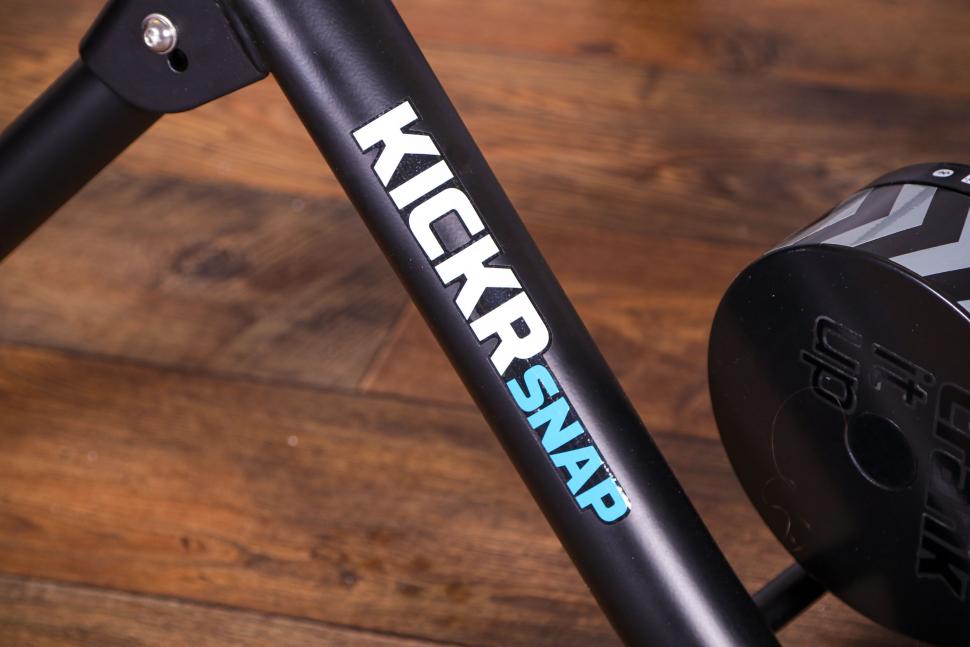
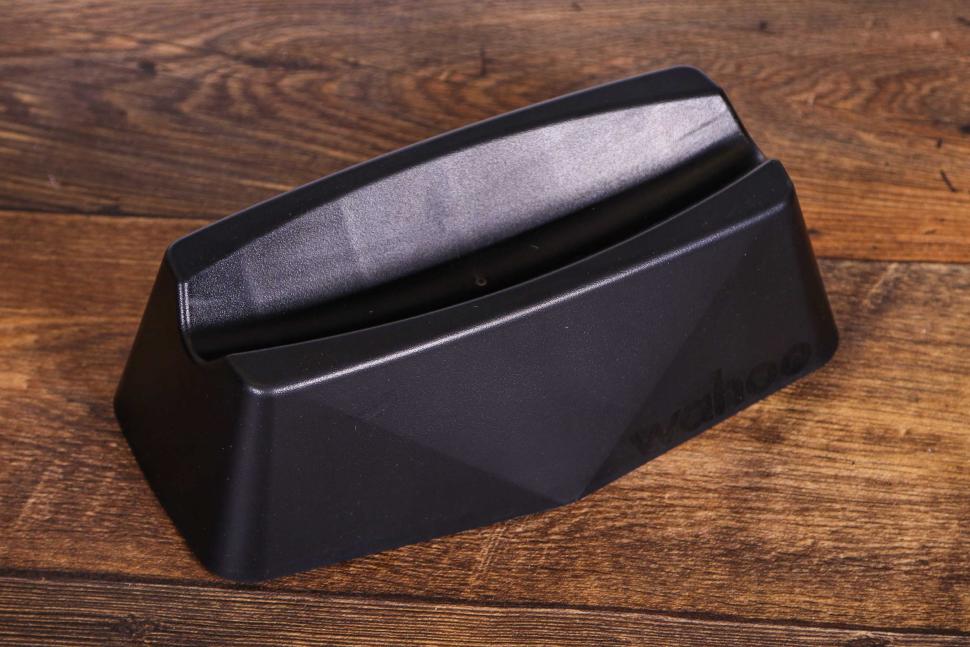
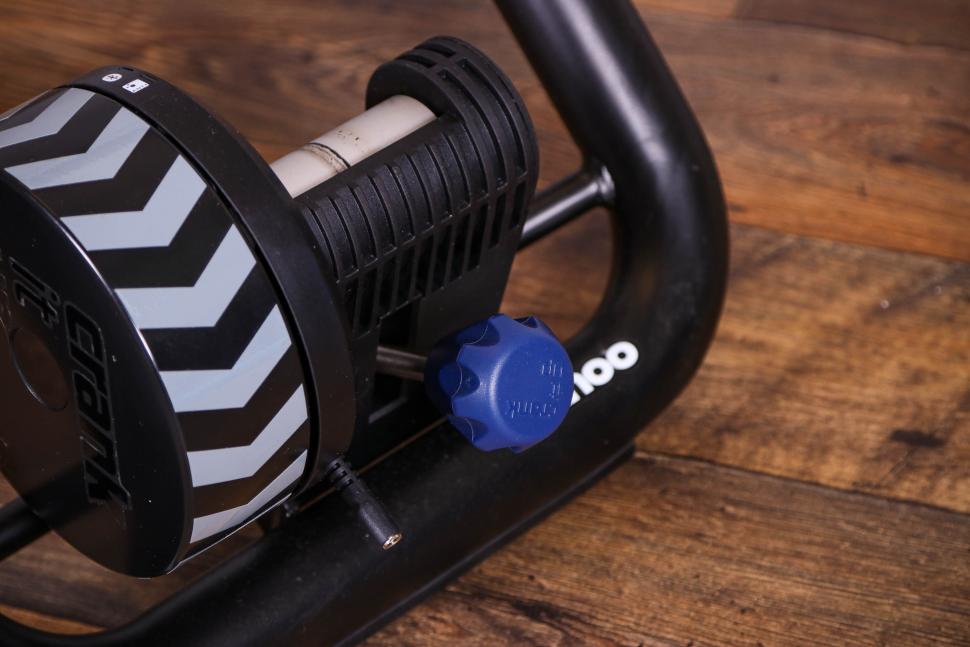
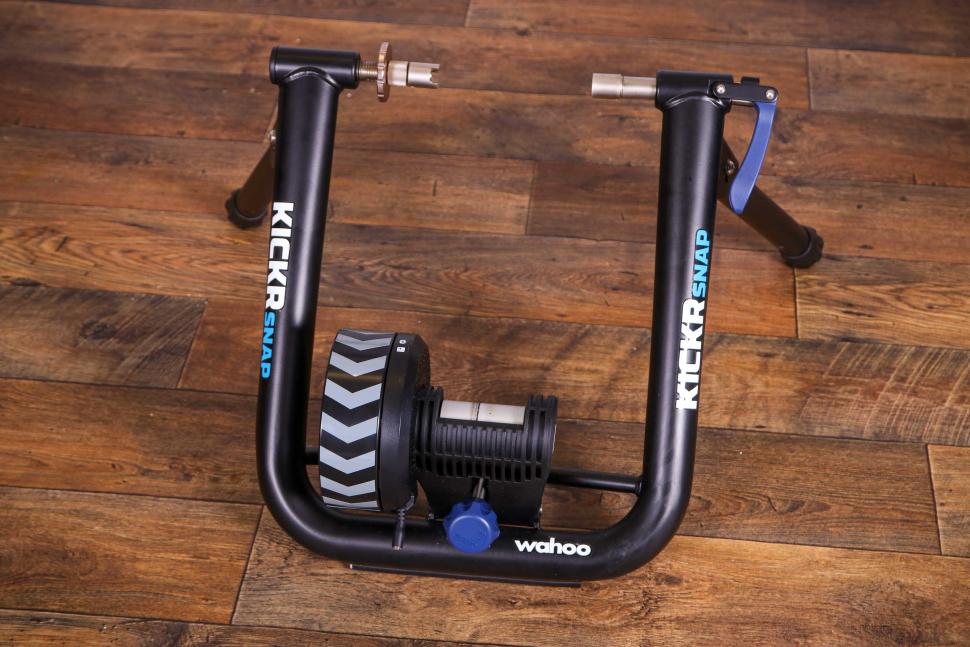
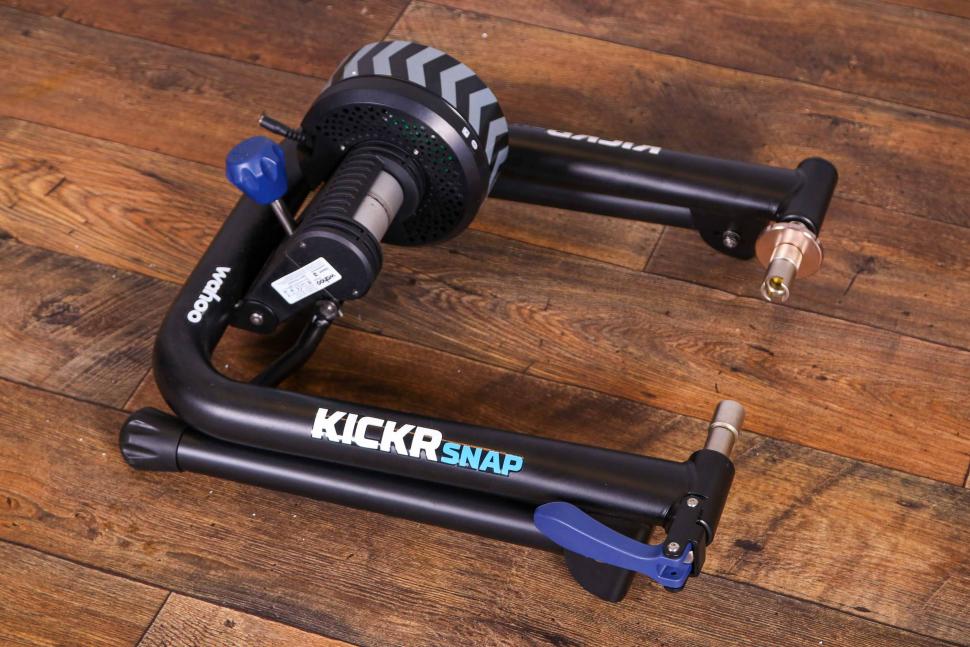
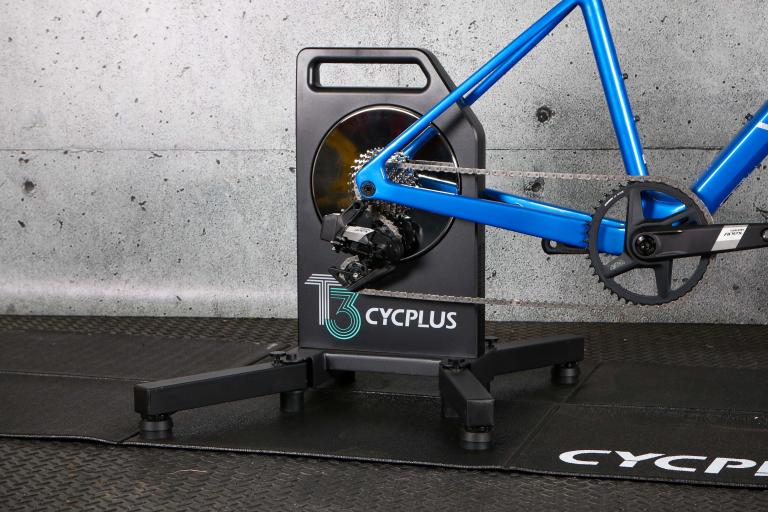
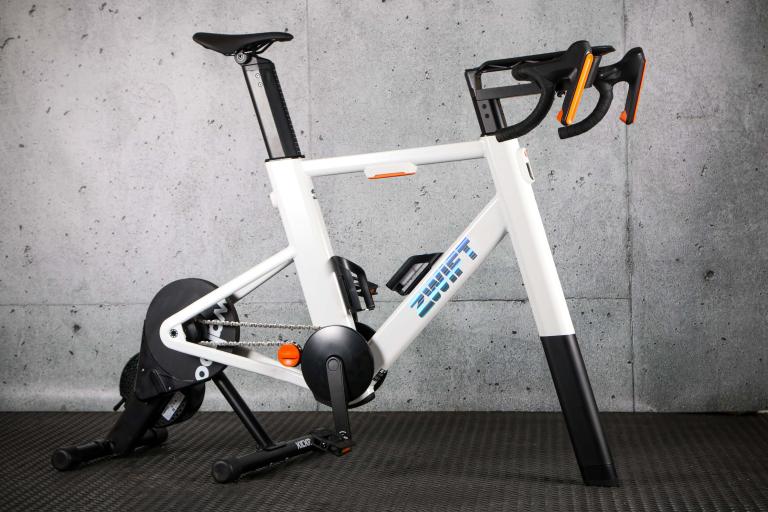

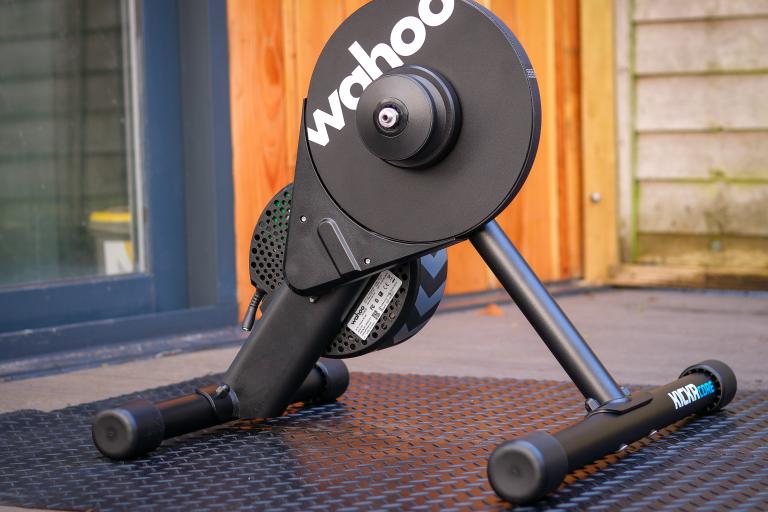
Add new comment
2 comments
Binned off the V1 i had of this trainer as it was wildly inaccurate! Bough a direct drive Wahoo and have never regretted it.
10 minute warm-up just to calibrate before every session? I'm out.